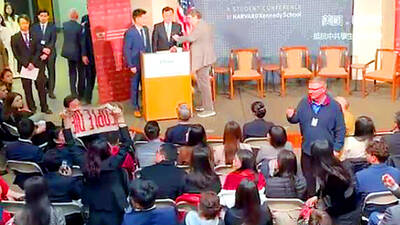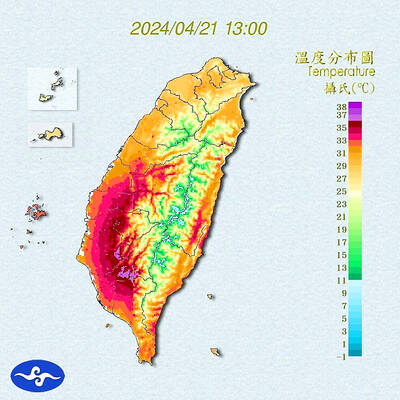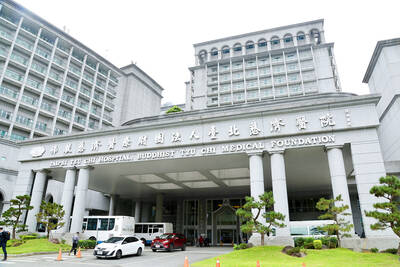Google and Facebook should pay taxes for the advertising revenue they earn from using content produced by Taiwanese news outlets, media experts told an online news conference yesterday.
The government should also investigate if news media have bargained on unequal terms with these large international platforms, they said, adding that it should ask them to offer a reasonable amount of funding to support the creation of quality news content.
Google and Facebook collect about 80 percent of Taiwan’s digital advertising revenue, causing local media outlets to lose more revenue than their counterparts in other countries, National Chengchi University journalism professor Feng Chien-san (馮建三) said, adding that funding available to news departments across the nation has been reduced.
Fewer people want to be journalists due to low salaries, he said.
“Taiwan has the freest environment for news media in Asia, but it cannot develop further due to a lack of resources. As such, we have seen a weakening democratic functioning of the news media and less supervision of the powerful and the mighty,” Feng said.
While governments in other countries have utilized administrative, judicial and legislative means to make the two tech giants pay for using news content, Feng said that a better solution would be to impose a tax on advertising revenue they have collected in Taiwan.
In addition to a corporate tax, some countries levy an additional tax on ad revenue, he said.
Sweden since the 1970s has used advertising tax revenue to support the development of the news media, while the Netherlands and South Korea have allocated part of the broadcast media’s advertising revenue to fund the news media, he said.
Taiwan could become the first country to impose an advertising tax from these cross-national platforms, Feng said.
Google is able to access a complete set of user data through its Ad Manager system, but the data are not available to news publishers, National Taiwan University Graduate Institute of Journalism professor Lin Chao-chen (林照真) said.
“Under the cost per thousand rule, news media in Taiwan can only earn NT$5 to NT$10 per thousand page views, and the price is far less than those in other countries,” she said.
In addition, publishers receive only 68 percent of advertising revenue for displaying ads with Google AdSense for content, while their share of revenue drops to 51 percent for using AdSense for search, Lin said.
However, Google also requires publishers to pay 20 percent of its advertising revenue to media agents, making it the largest beneficiary of digital advertising revenue, she said.
Facebook, on the other hand, creates advertising revenue through its “instant article” mechanism, making it possible to display advertisements at a faster pace, she said.
Advertisements are displayed while viewers read the news on Facebook, but Facebook is not required to pay to use the content, Lin said.
“Facebook does not generate content, but it reaps profits from selling ads through content. News publishers know neither the number of ads sold by Facebook through its content nor the aggregate advertising revenue. The platform reveals none of that information. It can easily change the algorithm to alter data traffic,” she said.
The two large platforms decide through big data and algorithms what the public sees in the digital era, and people need to realize that content is not generated by platforms themselves, National Taiwan Normal University Graduate Institute of Mass Communication professor Chen Ping-hung (陳炳宏) said.
Experts also suggested that the government pay attention to legislation on “neighboring rights” in Germany and France, as it can require platform operators to negotiate with and pay news media before they can use news media’s content.

A group of Taiwanese-American and Tibetan-American students at Harvard University on Saturday disrupted Chinese Ambassador to the US Xie Feng’s (謝鋒) speech at the school, accusing him of being responsible for numerous human rights violations. Four students — two Taiwanese Americans and two from Tibet — held up banners inside a conference hall where Xie was delivering a speech at the opening ceremony of the Harvard Kennedy School China Conference 2024. In a video clip provided by the Coalition of Students Resisting the CCP (Chinese Communist Party), Taiwanese-American Cosette Wu (吳亭樺) and Tibetan-American Tsering Yangchen are seen holding banners that together read:

UNAWARE: Many people sit for long hours every day and eat unhealthy foods, putting them at greater risk of developing one of the ‘three highs,’ an expert said More than 30 percent of adults aged 40 or older who underwent a government-funded health exam were unaware they had at least one of the “three highs” — high blood pressure, high blood lipids or high blood sugar, the Health Promotion Administration (HPA) said yesterday. Among adults aged 40 or older who said they did not have any of the “three highs” before taking the health exam, more than 30 percent were found to have at least one of them, Adult Preventive Health Examination Service data from 2022 showed. People with long-term medical conditions such as hypertension or diabetes usually do not

Heat advisories were in effect for nine administrative regions yesterday afternoon as warm southwesterly winds pushed temperatures above 38°C in parts of southern Taiwan, the Central Weather Administration (CWA) said. As of 3:30pm yesterday, Tainan’s Yujing District (玉井) had recorded the day’s highest temperature of 39.7°C, though the measurement will not be included in Taiwan’s official heat records since Yujing is an automatic rather than manually operated weather station, the CWA said. Highs recorded in other areas were 38.7°C in Kaohsiung’s Neimen District (內門), 38.2°C in Chiayi City and 38.1°C in Pingtung’s Sandimen Township (三地門), CWA data showed. The spell of scorching

POLICE INVESTIGATING: A man said he quit his job as a nurse at Taipei Tzu Chi Hospital as he had been ‘disgusted’ by the behavior of his colleagues A man yesterday morning wrote online that he had witnessed nurses taking photographs and touching anesthetized patients inappropriately in Taipei Tzu Chi Hospital’s operating theaters. The man surnamed Huang (黃) wrote on the Professional Technology Temple bulletin board that during his six-month stint as a nurse at the hospital, he had seen nurses taking pictures of patients, including of their private parts, after they were anesthetized. Some nurses had also touched patients inappropriately and children were among those photographed, he said. Huang said this “disgusted” him “so much” that “he felt the need to reveal these unethical acts in the operating theater